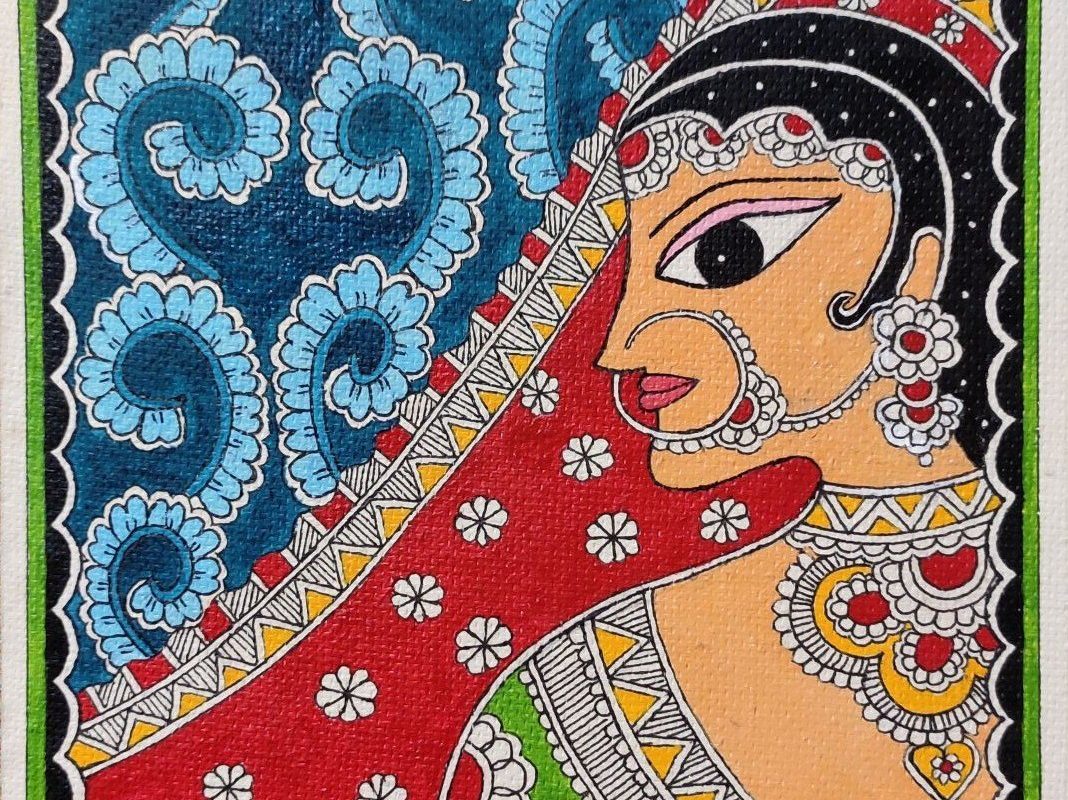Contents
Madhubani painting, an art form steeped in the traditions of the Mithila region in India, is a captivating melange of colors, culture, and history. This enchanting artistic tradition, which boasts intricate designs, vivid pigments, and a rich tapestry of symbolism, is not only a visual treat but a testament to the enduring legacy of Indian artistry. In this comprehensive guide, we embark on a journey to explore the intricate world of Madhubani painting, unearthing its origins, various styles, intricate techniques, and profound significance, all designed to help you stand out in the competitive realm of Google rankings.
A Glimpse into the Genesis of Madhubani Painting
Madhubani painting, also known as Mithila painting, traces its roots to the folklore and traditions of the Mithila region, which spans across India and Nepal. The name “Madhubani” itself carries a profound significance, derived from two words – “Madhu,” signifying honey, and “Ban,” symbolizing forest, which together encapsulate the sweet, symbiotic relationship this art form shares with nature. With a history spanning over 2,500 years, it stands as one of the oldest and most celebrated art forms in the world.
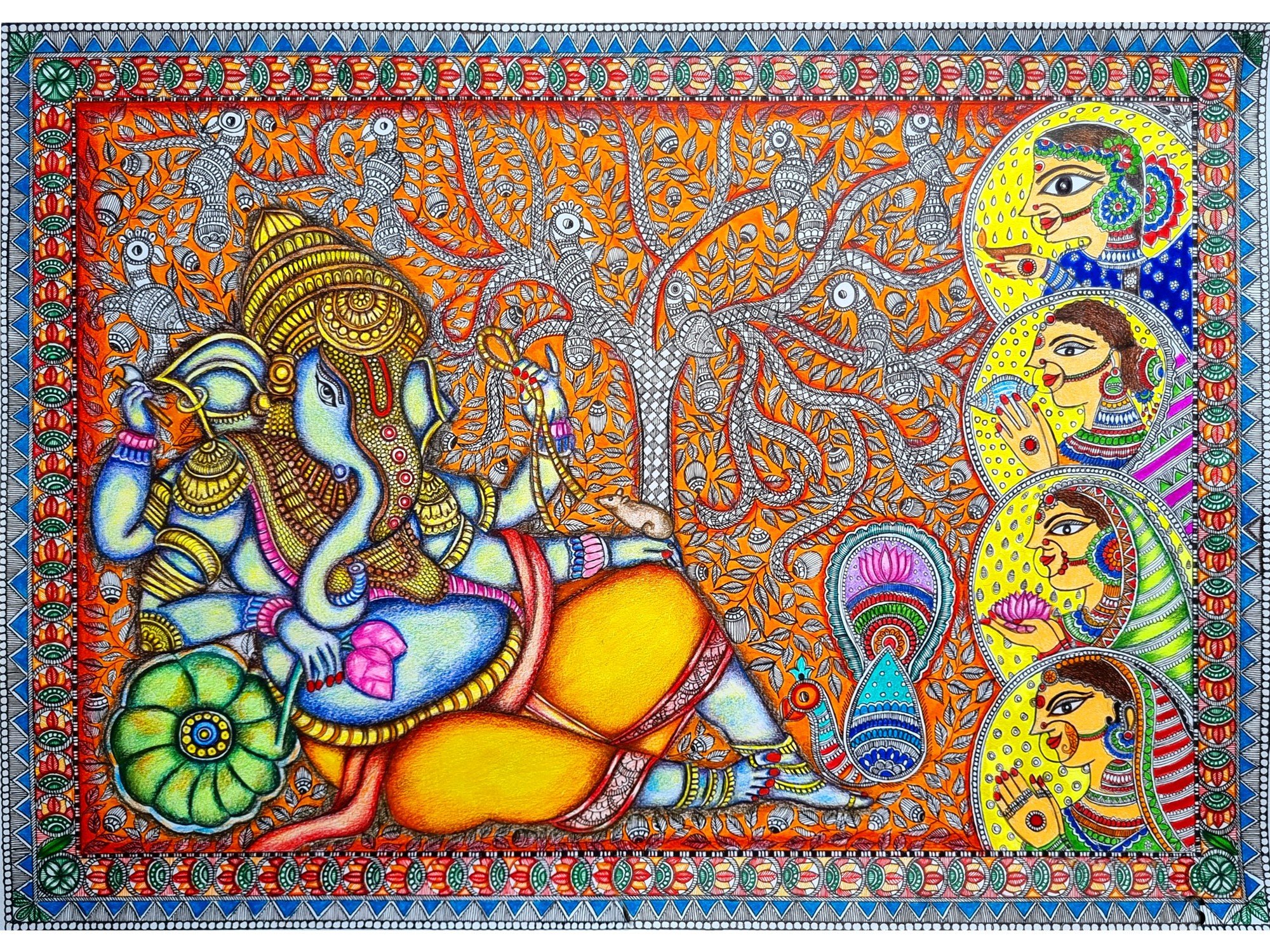
The Kaleidoscope of Styles and Themes
Madhubani painting isn’t a monolithic art form but rather a diverse tapestry of styles and themes, each exuding its unique charm and character, often reflective of the specific regions within Mithila. Let’s delve into these captivating styles:
Bharni – The Vibrant Elegance
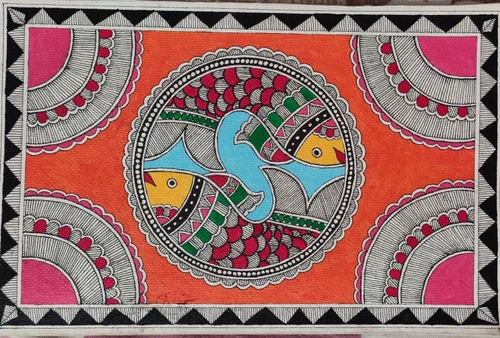
The Bharni style, characterized by intricate patterns and an exuberant use of colors, is celebrated for its depiction of Hindu deities. It weaves intricate narratives, often drawing inspiration from the epic tales of the Ramayana and Mahabharata. The rich palette of colors used in Bharni paintings adds a vibrant dimension to the art.
Kachni – Minimalistic Serenity
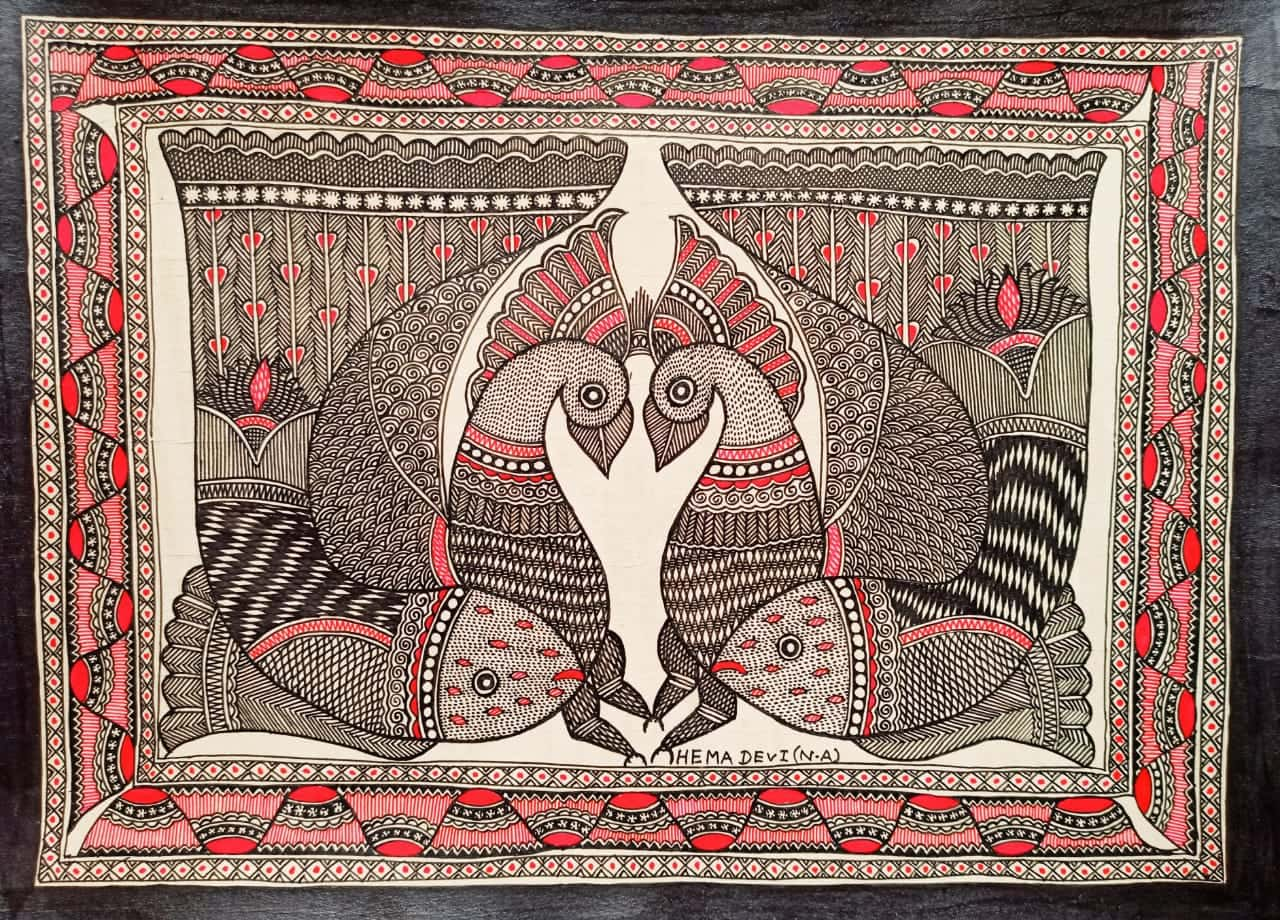
In stark contrast, the Kachni style is minimalistic and is traditionally executed in black and white. This style often focuses on everyday life, rituals, and the harmonious connection between humanity and nature. The stark simplicity of Kachni paintings is a visual treat, conveying profound messages through minimal means.
Tantrik – The Mystic Aura
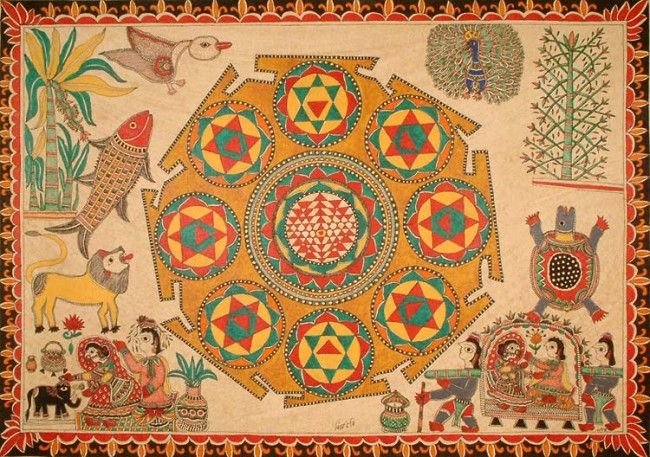
Tantrik Madhubani paintings delve into the mystical and spiritual realms. Adorned with intricate geometric patterns and symbolic motifs, they symbolize the cosmic universe. These paintings invite viewers into a world of deep symbolism and spirituality.
Kohbar – A Celebration of Love
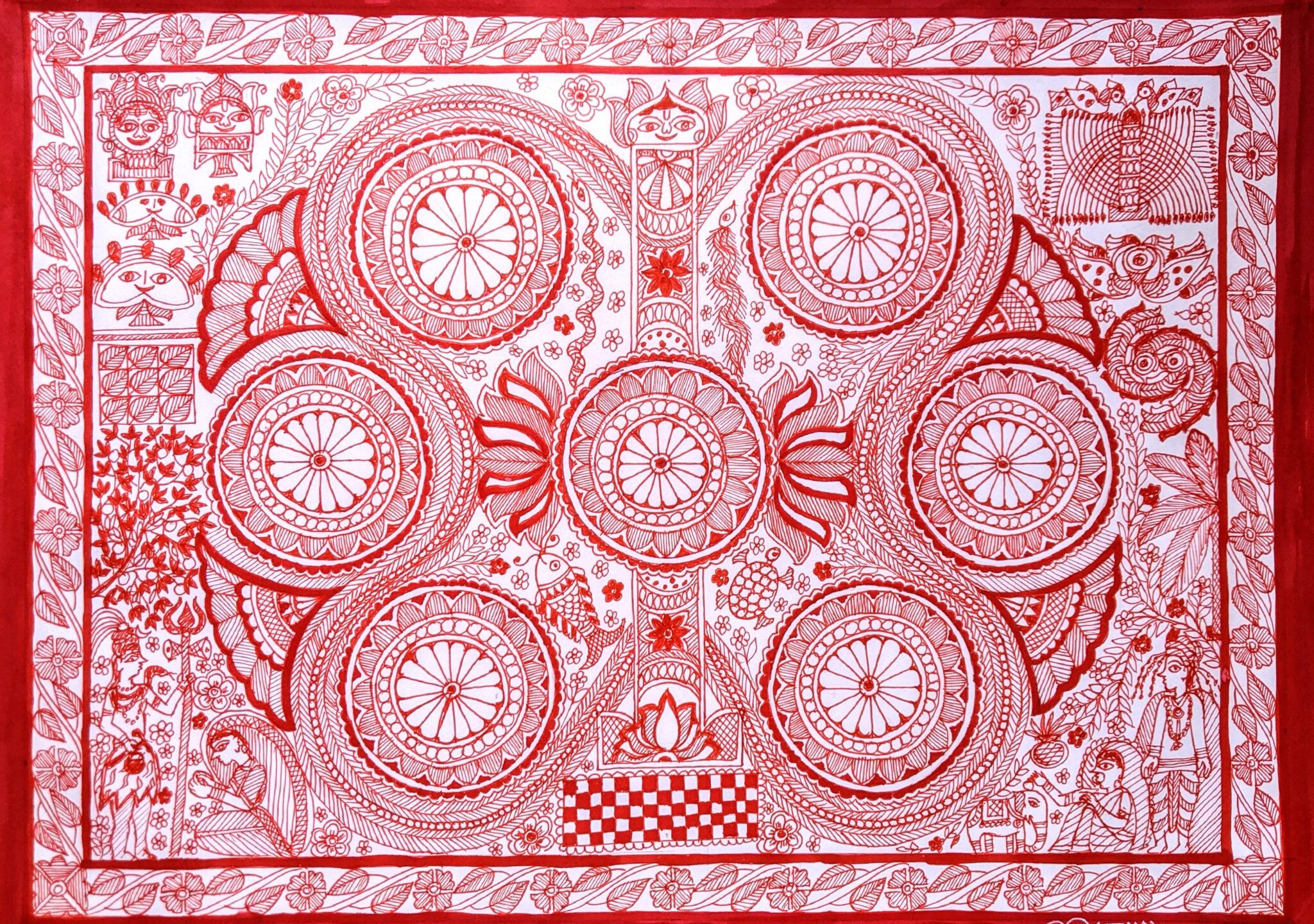
Kohbar paintings are an integral part of Madhubani culture, traditionally created to celebrate weddings. They are characterized by auspicious motifs believed to bring good fortune to newlyweds. Kohbar art encapsulates the essence of love, union, and the hope for a blissful marital journey.
Techniques and Materials: The Artistry Unveiled
What sets Madhubani art apart is the unique set of techniques and materials used by its artists, contributing to the distinctiveness of each piece.
Brushes and Colors – Nature’s Palette
Traditionally, Madhubani artists employ natural brushes crafted from twigs, matchsticks, or even their fingers. The pigments used are sourced from nature, including turmeric, indigo, and flowers. This harmonious relationship with the natural world infuses the art with its vibrant palette.
Line Work – Precision and Elegance
One of the hallmarks of Madhubani art is its intricate line work. The fine lines are drawn with meticulous precision, creating visually stunning and detailed patterns that captivate the eye. It’s a testament to the artists’ skill and dedication to their craft.
Diverse Surfaces – A Canvas for Expression
Madhubani art finds expression on various surfaces, from paper to cloth to walls. Each surface offers a unique canvas for artists to translate their creativity, allowing for a diverse range of applications.
Symbolism and Significance: Beyond the Canvas
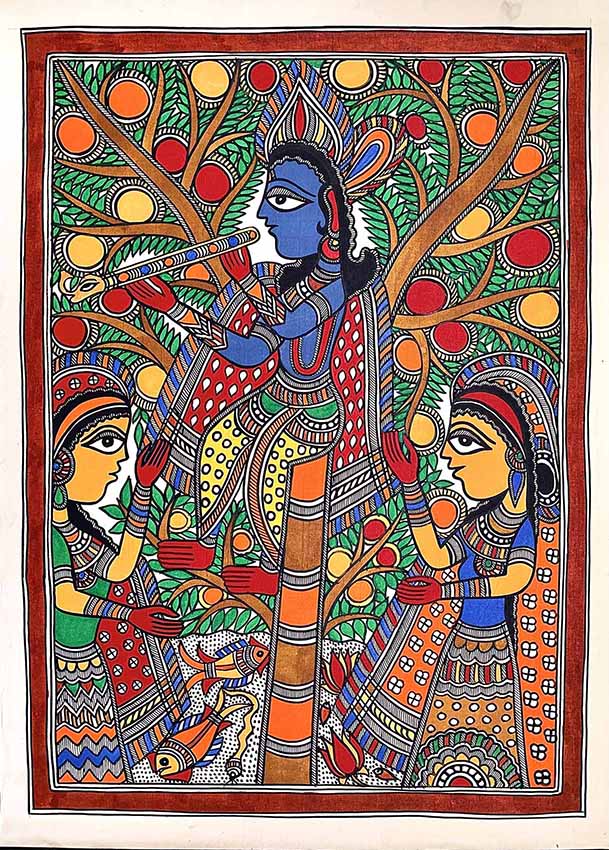
Madhubani art is not just about aesthetics; it’s a tapestry woven with deep symbolism and cultural significance.
Celebrating Nature – The Cosmic Connection
One of the core themes of Madhubani art is the celebration of humanity’s interconnectedness with the natural world. Animals, birds, and plants are integral components of this art, symbolizing the harmony between people and their environment.
Social and Religious Significance – A Blessing in Art
Madhubani paintings play a pivotal role in various ceremonies and rituals. They are believed to bring prosperity, good luck, and divine blessings. These paintings aren’t just pieces of art; they are conduits of positivity and spirituality.
Preserving Tradition – A Historical Legacy
The art form’s intergenerational transmission makes it a cultural and historical treasure. Madhubani painting stands as a testament to the rich heritage of the Mithila region, preserving traditions and stories that would otherwise be lost in the sands of time.
The Global Fascination
In recent years, Madhubani art has transcended its regional origins to capture the hearts of art enthusiasts worldwide. Its unique aesthetics, deep cultural history, and universal themes have made it a sought-after choice for art collectors and connoisseurs. The global embrace of Madhubani painting is a testament to its timeless appeal.
In Conclusion
Madhubani painting is a testament to the enduring power of art to transcend time and space. Its intricate designs, vibrant colors, and rich symbolism make it a treasure trove of culture and heritage. By understanding its origins, styles, techniques, and significance, we gain a profound appreciation for this timeless art form. Madhubani painting is more than art; it is a reflection of history, culture, and the undying spirit of creativity.

